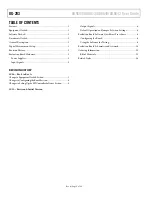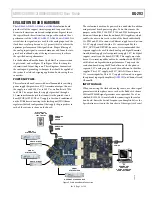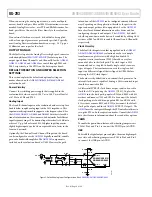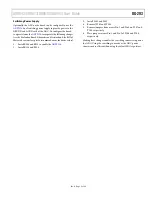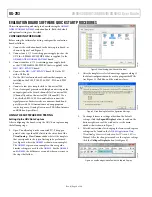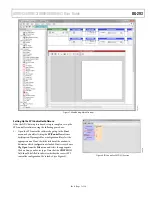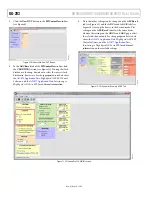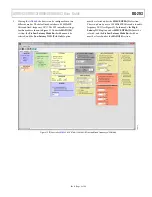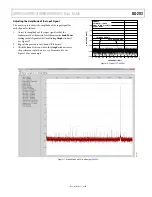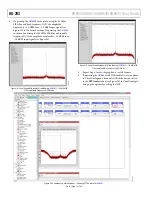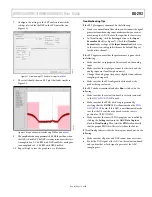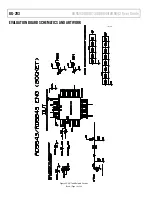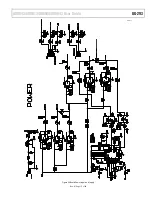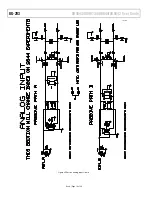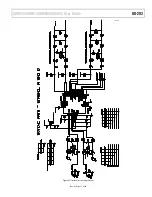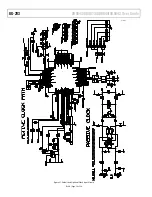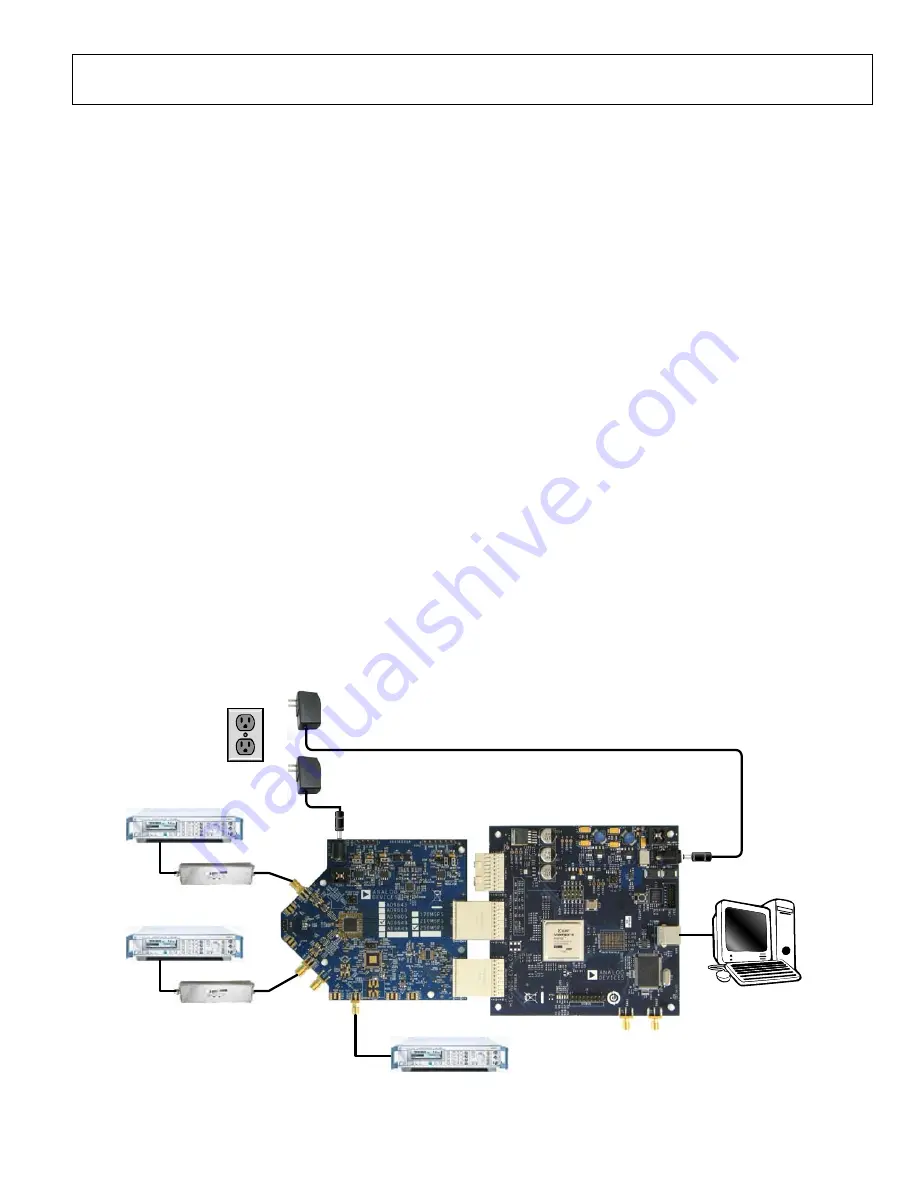
AD9643/AD9613/AD6649/AD6643 User Guide
UG-293
Rev. A | Page 3 of 26
EVALUATION BOARD HARDWARE
The
AD9643
,
AD9613
,
AD6649
, or
AD6643
evaluation board
provides all of the support circuitry required to operate these
devices in their various modes and configurations. Figure 2 shows
the typical bench characterization setup used to evaluate the ac
performance of the
AD9643
,
AD9613
,
AD6649
, or
AD6643
. It is
critical that the signal sources used for the analog input and the
clock have very low phase noise (<1 ps rms jitter) to achieve the
optimum performance of the signal chain. Proper filtering of
the analog input signal to remove harmonics and lower the inte-
grated or broadband noise at the input is necessary to achieve
the specified noise performance.
See the Evaluation Board Software Quick Start Procedures section
to get started, and see Figure 23 to Figure 34 for the complete
schematics and layout diagrams. These diagrams demonstrate
the routing and grounding techniques that should be applied at
the system level when designing application boards using these
converters.
POWER SUPPLIES
This evaluation board comes with a wall-mountable switching
power supply that provides a 6 V, 2 A maximum output. Connect
the supply to a rated 100 V ac to 240 V ac wall outlet at 47 Hz
to 63 Hz. The output from the supply is provided through a
2.1 mm inner diameter jack that connects to the printed circuit
board (PCB) at P201. The 6 V supply is fused and conditioned
on the PCB before connecting to the low dropout (LDO) linear
regulators (default configuration) that supply the proper bias to
each of the various sections on the board.
The evaluation board can be powered in a nondefault condition
using external bench power supplies. To do this, remove the
jumpers on the P103, P104, P107, P108, and P105 header pins to
disconnect the outputs from the on-board LDO regulators, which
enables the user to bias each section of the board individually.
Use P202 and P203 to connect a different supply for each section.
A 1.8 V supply is needed with a 1 A current capability for
DUT_AVDD and DRVDD; however, it is recommended that
separate supplies be used for both analog and digital domains.
An additional supply is also required to supply 1.8 V for digital
support circuitry on the board, DVDD. This supply must also
have a 1 A current capability and can be combined with DRVDD
with little or no degradation in performance. To operate the
evaluation board using the SPI and alternate clock options, a
separate 3.3 V analog supply is needed in addition to the other
supplies. This 3.3 V supply, or 3P3V_ANALOG, must have a
1 A current capability. This 3.3 V supply is also used to support
the optional input path amplifier (
ADL5202
) on Channel A and
Channel B.
INPUT SIGNALS
When connecting the clock and analog source, use clean signal
generators with low phase noise, such as the Rohde & Schwarz
SMA or HP 8644B signal generators or an equivalent. Use a 1 m,
shielded, RG-58, 50 Ω coaxial cable for connecting to the evalua-
tion board. Enter the desired frequency and amplitude (see the
Specifications section in the data sheet of the respective device).
ANALOG INPUT
PC
RUNNING ADC
ANALYZER
OR VISUAL ANALOG
USER SOFTWARE
SWITCHING
POWER
SUPPLY
SWITCHING
POWER
SUPPLY
6V DC
2A MAX
6V DC
2A MAX
WALL OUTLET
100V TO 240V AC
47Hz TO 63Hz
SIGNAL
SYNTHESIZER
ANALOG INPUT
SIGNAL
SYNTHESIZER
OPTIONAL CLOCK SOURCE
SIGNAL
SYNTHESIZER
09
94
0-
00
2
Figure 2. Evaluation Board Connection


